- Home
- Victor Hugo
Waterloo
Waterloo Read online
Victor Hugo
* * *
WATERLOO
Translated by
Norman Denny
Contents
18 June 1815
Follow Penguin
VICTOR HUGO
Born 1802, Besancon, France
Died 1885, Paris, France
Les Miserables was first published in 1862.
This translation was first published in 1976.
VICTOR HUGO IN PENGUIN CLASSICS
Les Miserables
Notre-Dame de Paris
18 June 1815
Had it not rained in the night of 17-18 June 1815, the future of Europe would have been different. A few drops of water, more or less, were what decided Napoleon's fate. Providence needed only a downpour of rain to make Waterloo the retort to Austerlitz. An unseasonably clouded sky sufficed to bring about the collapse of a world.
The Battle of Waterloo could not start until eleven-thirty because the ground was too wet. It had to dry out a little before the artillery could manoeuvre. And it was this that enabled Blucher to arrive in time.
Napoleon was an artillery officer and never forgot it. At the heart of this prodigious commander was the man who had reported to the Directory after the Battle of Aboukir, 'Some of our shot killed six men.' All his battle-plans were designed to suit the heavy armament. To bring the artillery to bear on the critical point, this to him was the key to victory. He treated the enemy general's strategy as though he were attacking a fortress, and he breached it. He pounded the weak points with grape-shot, and shaped and resolved battles with cannon-fire. His was a marksman's genius. To beat in the squares, pulverize the regiments, break the lines, maul and scatter the mass, this was the secret - ceaseless hammering - and it was done by the use of cannon. This formidable procedure, applied with genius, rendered him invincible for fifteen years, a dark master of the pugilism of war.
He relied more than ever on artillery in that June of 1815 because he had the advantage of numbers. Wellington had only 159 guns; Napoleon had 240.
Had the ground been dry, so that the artillery could move, the battle would have begun at six in the morning; it would have been over and done with by two, three hours before the Prussians could turn the scales.
How much of the blame for his defeat is to be attributed to Napoleon? Is the navigator necessarily responsible for the shipwreck?
Was Napoleon's undeniable physical decline at this stage accompanied by a weakening of his faculties? Had twenty years of warfare worn the blade as well as the scabbard, the soul as well as the body? Was the veteran becoming sadly manifest in the commander? In a word, was his genius fading, as many reputable historians believe, and was he frenziedly seeking to hide the fact from himself? Was he beginning to waver under chance setbacks, or - a grave weakness in a general - was he becoming careless of danger? Is there a point in the lives of men who may be termed the giants of action when their vision becomes clouded? Age is no threat to the great men of the mind. With the Dantes and the Michelangelos, to grow older is to grow: is it to shrink, in the case of the Hannibals and the Bonapartes? Had Napoleon lost his flair for victory? Was he no longer able to foresee the pitfall, to detect the trap, to discern the crumbling edge of the abyss; had he lost his instinct for averting disaster? He who had travelled all the roads to triumph, pointing the way with a lordly finger from his fiery chariot, was he now so locked in obsession as to lead his tumultuous following of legions over the precipice? Had he, at the age of forty-six, gone finally mad? Had this titanic coachman of destiny become no more than a breakneck driver?
We do not believe this.
His plan of battle, it is generally acknowledged, was masterly. It was to drive straight for the gap between the Allied forces and divide them in two, pushing the British towards Hal and the Prussians towards Tongres, and making of Wellington and Blucher two separate segments. Mont-Saint-Jean was to be carried and Brussels seized, the Germans flung back to the Rhine and the English into the sea. All this Napoleon intended to achieve by means of this battle; after which he would review the position.
It goes without saying that we do not claim to be writing a history of Waterloo. A critical moment in our tale is linked with the battle, but its history is not our concern. This has, in any case, been admirably recounted by Napoleon himself, from one point of view, and from other aspects by a galaxy of historians.
For our part, we leave to the experts their task, being ourselves no more than a remote observer, a traveller across the plain, scrutinizing that earth sodden with human blood and perhaps mistaking the appearance for the reality. We are not competent to deal in scholarly terms with a mass of facts in which, no doubt, there is an element of illusion, nor do we possess the military or strategic competence which would enable us to assess them professionally. It appears to us that a series of hazards dictated the course of events at Waterloo; and as for Destiny, that mysterious culprit, we judge it like those simple-minded judges, the common people.
'A'
To form a clear idea of the Battle of Waterloo we have only to draw a capital A. The left leg of the A is the road from Nivelles, the right leg is the road from Genappe, and the cross is the sunken lane from Ohain to Braine-l'Alleud. The point of the A is Mont-Saint-Jean, where Wellington was. The foot of the left leg is Hougomont, where Reille and Jerome Bonaparte were, and the foot of the right leg is La-Belle-Alliance, Napoleon's headquarters. A little below the point where the cross of the A meets the right leg is La-Haie-Sainte; and the middle of the cross is the precise spot where the battle was decided. That is where the lion has been placed, and unwitting symbol of the supreme heroism of the Imperial Guard. The triangle formed by the upper part of the A is the plateau of Mont-Saint-Jean, the struggle for which was the essence of the battle.
The wings of the two armies extended to right and left of the roads from Genappe and Nivelles, d'Erlon facing Picton and Reille facing Hill. Beyond the apex of the A and the plateau of Mont-Saint-Jean lies the forest of Soignes.
As for the plain itself, imagine a wide rolling landscape, each successive fold dominating its predecessor, the whole rising to Mont-Saint-Jean and ending in the forest.
Two hostile armies on a field of battle are like two wrestlers, bodies interlocked, each seeking to throw the other. Everything is turned to account, the thicket becomes a strong-point, the angle of a wall a buttress. Lacking any kind of shelter, a regiment may give ground; but a dip in the plain, an irregularity in the terrain, a convenient cross-road, a wood or a ravine, any of these may suffice to stay the feet of the colossus known as an army and prevent its retreat. He who abandons the field is beaten. Hence the necessity for the responsible commander to examine every feature of the countryside.
Both generals had carefully studied the plain of Mont-Saint-Jean, now called the plain of Waterloo. Wellington, with commendable foresight, had ridden over it the previous year, seeing in it a possible setting for a major battle. In the event he was the more favourably situated, the British army being on higher ground than the French.
To attempt a picture of Napoleon on that morning of 18 June, seated on his horse on the height of Rossomme with his field-glass in his hand, is scarcely necessary. Everyone is familiar with it, the calm profile under the small cocked hat of the College of Brienne, the green tunic with white facings, the grey top-coat hiding the epaulettes, the glimpse of red sash under the waistcoat, the leather breeches, the white horse with its cloth of purple velvet embroidered at the corners with a crowned N and an eagle, the cavalry boots worn over silk stockings, the silver spurs, the Marengo sword - this picture of the last Caesar lives in the memory of all men, acclaimed by some and reviled by others.
The figure has long been fully illumined, having emerged from the kind of legendary fog that
emanates from most great men, and for a time hides the truth about them. Today history and broad daylight are one.
The daylight of history is merciless; it has the strange and magical quality that, although it is composed of light, and precisely because of this, it casts shadows where once only brilliance was to be seen, making of one man two images, each opposed to the other, so that the darkness of the despot counteracts the majesty of the leader. Thus the world arrives at a more balanced judgement. Babylon ravished diminishes Alexander, Rome in chains diminishes Caesar, Jerusalem sacked diminishes Titus. Tyranny follows the tyrant. It is grievous for a man to leave behind him a shadow in his own shape.
The fog of war
Everybody knows about the early stage of the battle, the tentative uncertain opening, dangerous for both armies but more so for the English than for the French.
It had rained all night and the ground was sodden with the downpour. Water lay in pools, in some places coming up to the axles of the ammunition-limbers and covering the lower harness with mud. If the crops of wheat and rye crushed under the wheels of the mass of vehicles had not partly filled in the ruts, all movement, particularly in the small valleys round Papelotte, would have been impossible.
The action was late in beginning. Napoleon, as we have said, was accustomed to keep the artillery under his direct command, using it like a pistol to be aimed at particular points in the battle, and for this it was necessary for the sun to come out and dry the ground so that the batteries could move at a gallop as required. But the sun did not shine. This was not Austerlitz. When the first gun was fired General Colville looked at his watch and noted that the time was eleven thirty-five.
The battle began with a furious assault - more furious, perhaps, than the Emperor intended - by the French left wing on Hougomont. At the same time Napoleon attacked in the centre, flinging Quiot's brigade against La-Haie-Sainte, while Ney thrust with the French right wing against the English left, occupying Papelotte.
The attack on Hougomont was partly a feint intended to induce Wellington to concentrate on that flank. The plan would have succeeded had not the four companies of English Guards and a detachment of Belgians from Perponcher's division clung so stubbornly to the position that Wellington needed only to reinforce them with four more companies of Guards and a battalion of Brunswickers.
The intention of the right-wing attack on Papelotte was to break the English left, cut the road to Brussels, thus barring the way to the Prussians, carry Mont-Saint-Jean, and force Wellington to fall back, first on Hougomont, then on Braine-l'Alleud and then on Hal. It was a clear-cut plan which largely succeeded. Papelotte and La-Haie-Sainte were both taken.
A detail may here be noted. The British infantry, especially Kempt's brigade, included a great many raw recruits. These young soldiers bore themselves gallantly against our own redoubtable infantry and despite their inexperience came out of the affair with honour. In particular they did excellent service as sharp-shooters. The sharp-shooter, being to some extent on his own, may be said to be his own commander. Novices though they were, these recruits had dash and showed themselves to possess something of the French capacity for improvisation. This did not altogether please Wellington.
After the fall of La-Haie-Sainte the battle hung in the balance. This middle phase, from midday until four o'clock, is indistinctly visible, shrouded in the fog of war. We have a glimpse of huge turmoil, a kaleidoscopic picture of outmoded military trappings, busbies, sabre-belts, crossed shoulder-straps, ammunition pouches, hussars' dolmans, wrinkled red riding-boots, heavy fringed shakos, the black tunics of Brunswick mingled with the scarlet of England, English soldiers with white-padded epaulettes, Hanoverian light horse in their narrow, red-plumed helmets, bare-kneed Scots in plaid and kilts, the white gaiters of our own grenadiers - isolated incidents rather than battle-lines, more suited to a painter such as Salvator Rosa than to an artillery commander such as Gribeauval.
There is an element of tempestuous convulsion in every battle - quid obscurum, quid divinum - and every historian, peering into the melee, can find what he looks for. Whatever the calculations of the generals, the clash of armed masses has unpredictable repercussions; each commander's plan shapes and distorts that of the other. One sector of the battlefield swallows up more combatants than another, just as water drains away more or less rapidly according to the nature of the soil. More men have to be sent to a particular point than was originally intended, the line writhes and wavers like a thread blowing in the wind. There is no logic in the flow of blood; the army fronts are like waves on the seashore, advancing and retreating regiments forming bays and headlands, impermanent as a shifting sand. Where there was infantry, artillery appears; artillery is replaced by cavalry; battalions are like puffs of smoke. At a given place there was a given object: look for it again and it is gone. The light shifts, the dark patches advance and retreat, a graveyard wind blows, driving and scattering the tragic multitude of men. All is movement and oscillation. The immobility of a mathematical plan or diagram may present a moment but never a day. To depict a battle we need a painter with chaos in his brush. Rembrandt is better than Van der Meulen; he who was accurate at noon is a liar by three o'clock. Geometry is misleading; only the tempest is true. And there comes a stage in every battle when it degenerates into hand-to-hand combat, dissolves in fragments, innumerable separate episodes concerning which Napoleon himself said that they belong more to regimental records than to the history of an army. Thus the historian has a right to summarize. He can do no more than grasp the broad outline. No narrator, be he never so conscientious, can fix the exact shape of that ugly cloud that is called a battle.
This, which is true of all great clashes between armies, applies particularly to Waterloo. Nevertheless there came a point, during the afternoon, when the shape of the battle was defined.
Four o'clock in the afternoon
At about four o'clock Wellington's army was in serious trouble. The Prince of Orange was in command of the centre, with Hill commanding the right wing and Picton the left. The Prince, gallant and despairing, was calling upon his lowlanders, the men of Nassau and Brunswick, to stand fast. Hill, greatly weakened, was falling back upon Wellington and the reserve. Picton was dead, killed by a ball through the head at the moment when the colours of the French 105th regiment of the line had been captured by the English. For Wellington there were two critical points, Hougomont and La-Haie-Sainte. Hougomont was still holding out, but in flames. La-Haie-Sainte had fallen. Three thousand men had died in that farm. Of the German battalion which was among its defenders only five officers and forty-two men survived. The cavalry force of 1200 horses had lost half its strength, the Scots Greys and Ponsonby's heavy dragoons having been overwhelmed by Bro's lancers and Travers's cuirassiers. Most of its officers had fallen. Two infantry divisions, the fifth and sixth, had been virtually destroyed.
With Hougomont breached and La-Haie-Sainte captured, only one strong-point remained, the centre. This was still holding, and Wellington reinforced it, bringing in Hill, who was at Merbe-Braine, and Chasse, who was at Braine-l'Alleud.
The English centre, slightly concave, very dense and compact, was in a strong position. It occupied the plateau of Mont-Saint-Jean, with the village behind it and a steep slope in front. At its back was a stone mansion, part of the state-owned domain of Nivelles, standing at the road-intersection, a sixteenth-century building of such solid construction that musket-fire ricocheted off it. The trees and thickets bordering the plateau had been pruned to create embrasures and loop-holes behind which the guns waited in ambush, and this work of concealment, an entirely legitimate stratagem of war, had been so skilfully carried out that Haxo, who had been sent by Napoleon to reconnoitre the enemy batteries, saw nothing and reported that there were no defence works other than the barricades on the road to Nivelles and Genappe. It was the time of year when the crops are in full growth, and a battalion of Kempt's brigade, armed with carbines, lay hidden in the standing corn.
In short, the Anglo-Dutch centre was well placed. What endangered its position was the forest of Soignes, a wide extent of woodland in its rear containing the marshes of Groenandel and Boitsfort. An army could not hope to carry out an orderly withdrawal over this rough terrain, where its units were bound to become separated and the artillery likely to be bogged down in the swamps. Many of the officers maintained - although it must be said that others disagreed with them - that retreat would become a rout.
Wellington reinforced the centre with one of Chasse's brigades, brought in from the right wing, one of Wincke's brigades, from the left, and Clinton's division. In support of his British contingent, consisting of Halkett's command, Mitchell's brigade, and Maitland's Guards, he brought in the Brunswick infantry, the Nassau contingent, Kielmansegge's Hanoverians, and Ompteda's Germans. Thus he had twenty-six battalions under his direct command. As Charras has said, 'The right wing was folded back behind the centre.' A very powerful battery occupied a fortified position on the site of what is now known as 'the Waterloo Museum'. In addition, concealed in a fold in the ground, Wellington had Somerset's Dragoon Guards, the other half of the justly renowned English cavalry. Ponsonby had been wiped out (he himself had been killed), but Somerset remained.
The battery, which might almost have been termed a redoubt if the work had been finished, was drawn up behind a low garden wall, hastily reinforced with sandbags, with a broad, open slope in front of it. There had been no time to complete its defence works.
Wellington, worried but impassive, had remained throughout the day seated on his horse in the same place, a little in front of the ancient mill of Mont-Saint-Jean, which still exists, and in the shade of an elm-tree which an Englishman, a vandal enthusiast, subsequently bought for 200 francs, cut down and took away. Wellington's bearing was one of icy heroism. The bullets whistled past him. Gordon, one of his aides, was killed at his side. Lord Hill demanded of him after a shell-burst, 'What are your orders, my lord, if you are killed?' ... 'Do what I'm doing,' Wellington replied, and he said tersely to Clinton, 'Hang on to the last man.' When things were clearly going badly he cried to the men of Talavera, Vitoria, and Salamanca, 'Don't yield an inch. Think of England!'

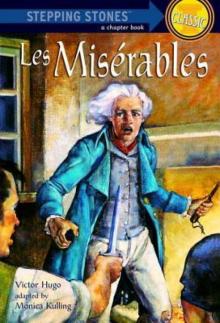 Les Miserables
Les Miserables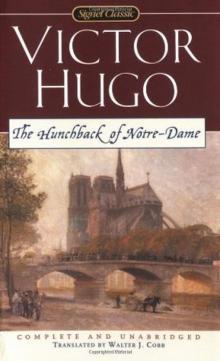 The Hunchback of Notre-Dame
The Hunchback of Notre-Dame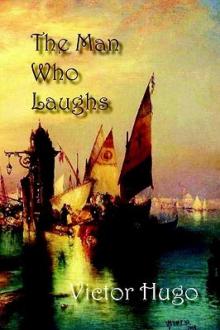 The Man Who Laughs
The Man Who Laughs The Last Day of a Condemned Man
The Last Day of a Condemned Man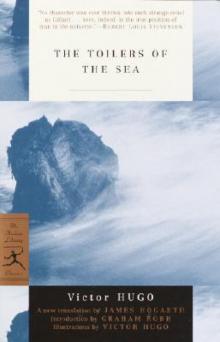 The Toilers of the Sea
The Toilers of the Sea Waterloo
Waterloo Les Misérables, v. 1/5: Fantine
Les Misérables, v. 1/5: Fantine Les Misérables, v. 3/5: Marius
Les Misérables, v. 3/5: Marius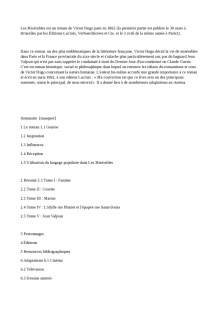 Les Misérables, v. 2/5: Cosette
Les Misérables, v. 2/5: Cosette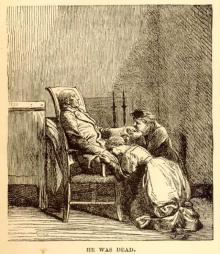 Les Misérables, v. 5/5: Jean Valjean
Les Misérables, v. 5/5: Jean Valjean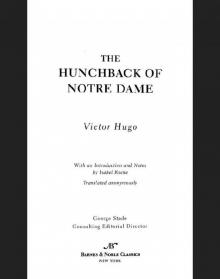 Hunchback of Notre Dame (Barnes & Noble Classics Series)
Hunchback of Notre Dame (Barnes & Noble Classics Series)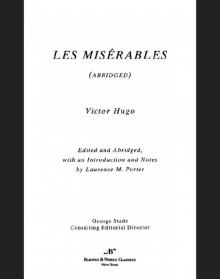 Les Miserables (abridged) (Barnes & Noble Classics Series)
Les Miserables (abridged) (Barnes & Noble Classics Series)